
The Dragon Age series has consistently offered unique methods for players to craft their protagonists. Dragon Age: The Veilguard continues this tradition by providing players with faction-specific backgrounds for the main character, Rook. Each background comes with a narrative that helps define Rook’s identity and connection to their chosen faction, although some offer more room for personal storytelling and roleplaying than others.
Set about ten years after the conclusion of Dragon Age: Inquisition and roughly twenty-two years post-Dragon Age: Origins, The Veilguard picks up from the unresolved storyline presented in Trespasser. As Rook, players embark on a quest to track down Solas, assisted by Varric and Harding. However, chaos ensues when two formidable elven deities are released from the Fade, compelling Rook to assemble a diverse team from various factions introduced in the game.
Understanding Backgrounds in Dragon Age: The Veilguard
Faction Backgrounds Offer Context for Rook

In contrast to earlier installments of Dragon Age, where race heavily influenced character backgrounds, The Veilguard emphasizes faction allegiance. The significance of race is diminished, with special dialogue options largely correlating to Rook’s chosen faction. Players can opt from six factions during the character creation process, including the renowned Grey Wardens and Antivan Crows, along with newer factions such as the Shadow Dragons of Minrathous and the Veil Jumpers.
Regardless of race, players can embody any of the six factions. Selecting a faction provides players with a concise narrative that outlines Rook’s connection to it. Each faction offers a distinctive story detailing how Rook became involved with Varric and Harding, often involving a falling out with authority figures that prompted their departure. Additionally, each faction confers mechanical advantages, such as increased health for Grey Wardens or an additional potion slot for Antivan Crows.
Exploring Roleplay Options Among Backgrounds
Diverse Backstory Structures and Surnames Offered by Factions


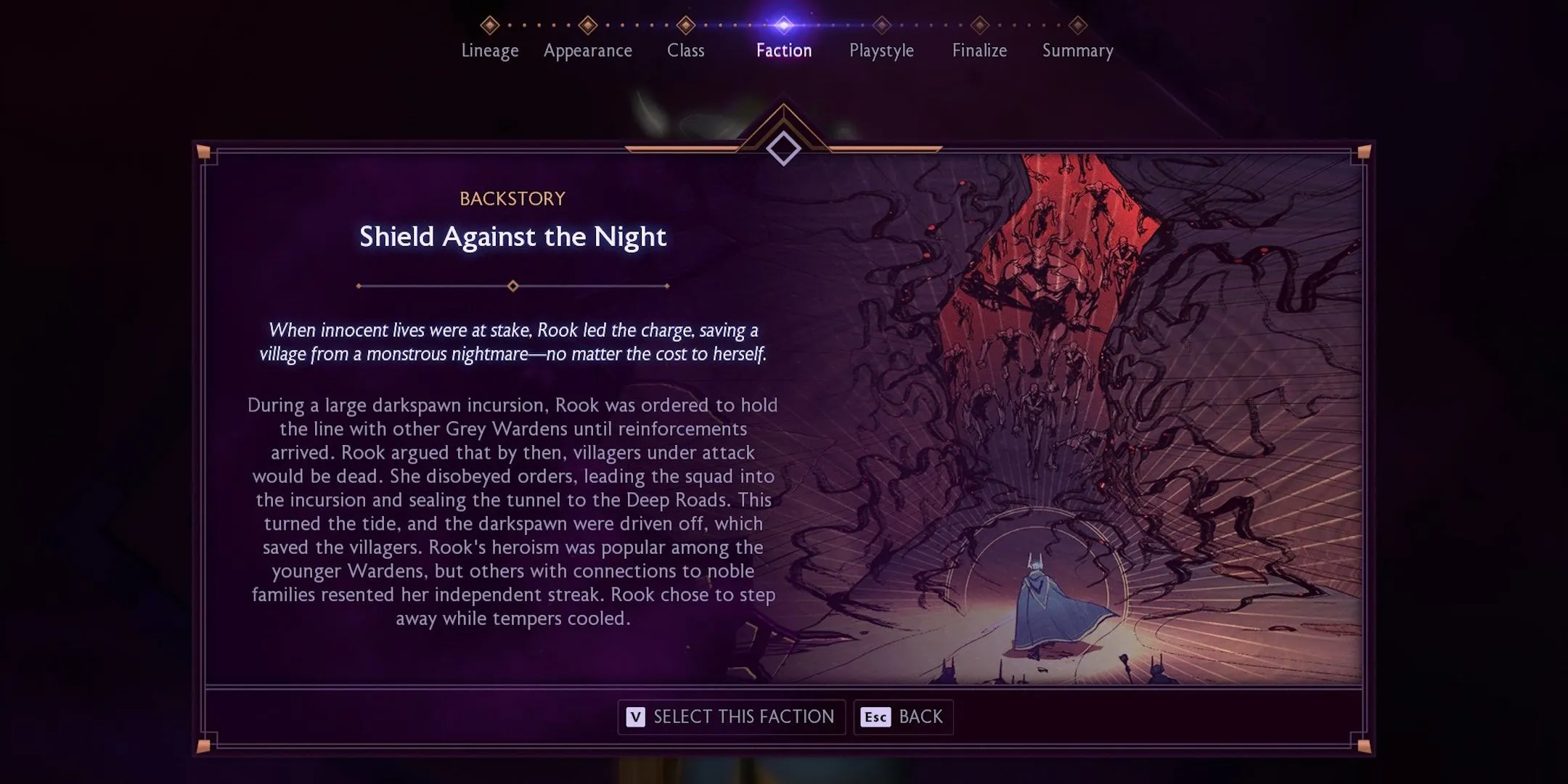
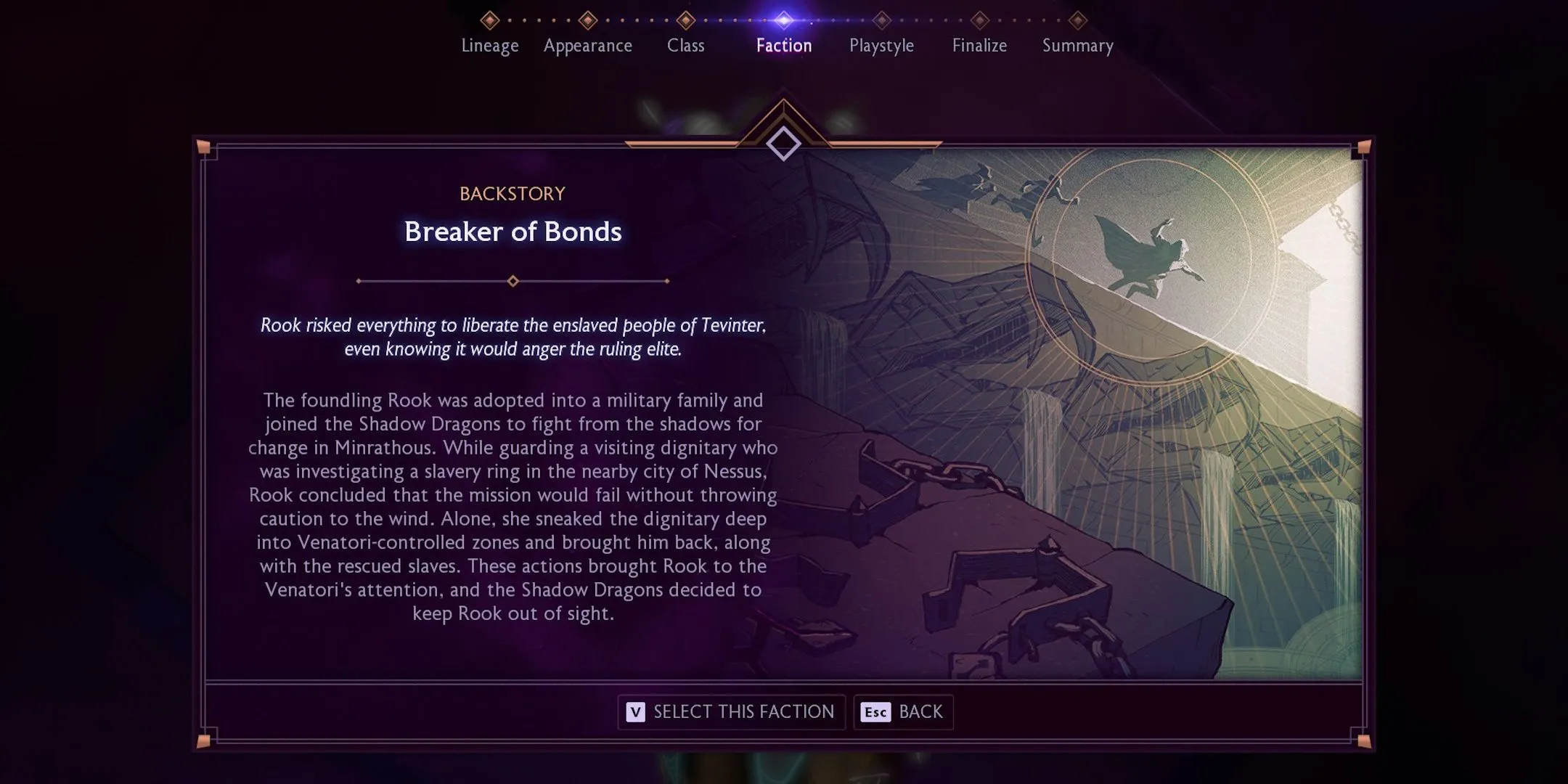
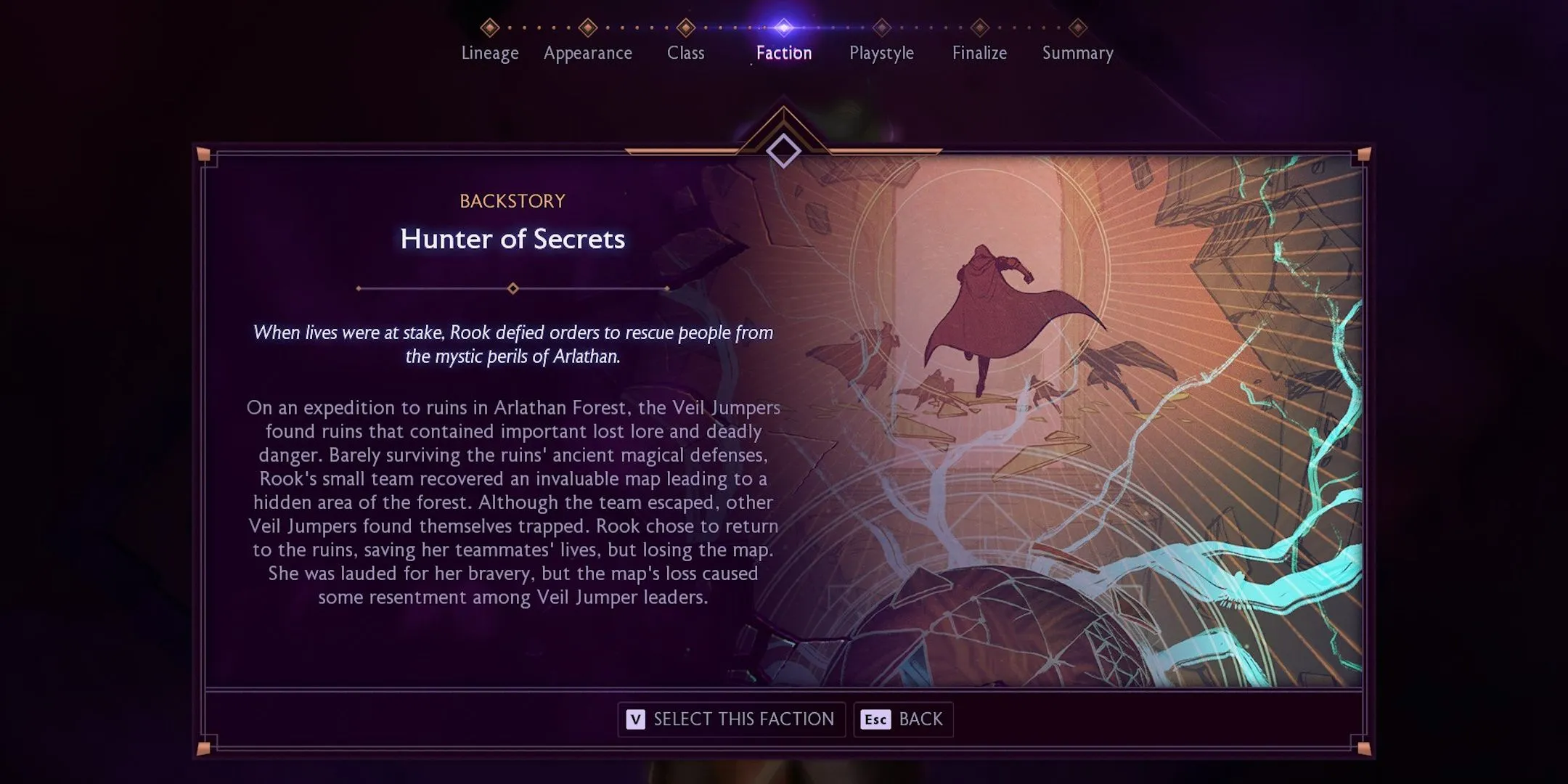
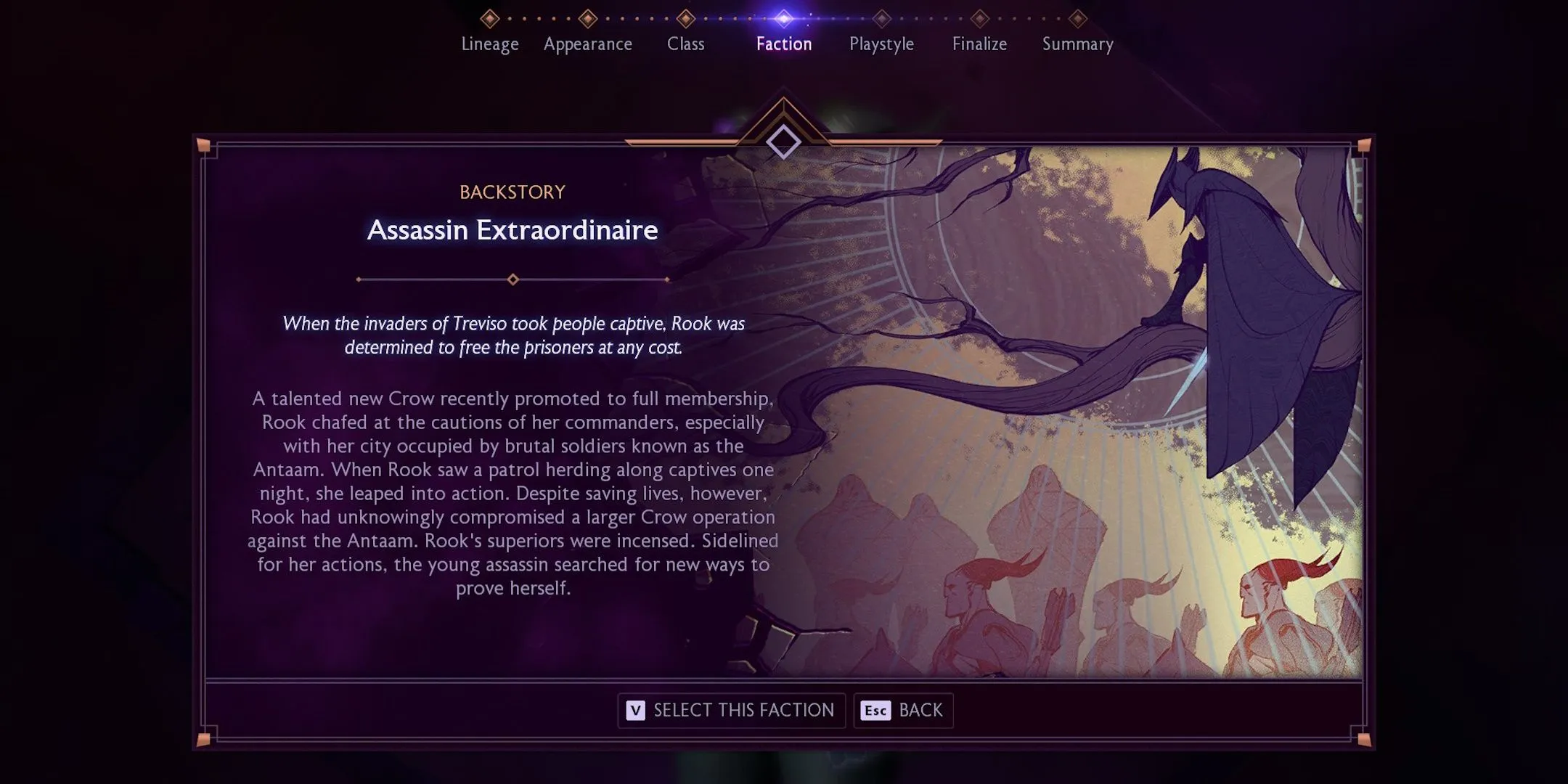
When examining the six backgrounds available for Rook, it’s evident that some lend themselves more readily to roleplaying and custom backstory creation than others. Many players appreciate working within the confines of an established character history while adding their own creative elements. Conversely, others might favor backgrounds that allow for more flexibility and interpretation.
For those who prefer structured character development, the Mourn Watch and Shadow Dragon backgrounds are particularly appealing. Both backgrounds touch upon Rook’s formative years, hinting at their upbringing, which can significantly influence how players perceive Rook’s character during gameplay. A Mourn Watch background portrays Rook as a mysteriously found child nurtured by necromancers within the Grand Necropolis, while a Shadow Dragon background describes Rook as having been adopted by a respected general of Tevinter before joining the faction.
Players often draw inspiration from past favorites when creating backgrounds. For instance, community members have thoughtfully tied Rook’s story to beloved characters from earlier titles. Examples include an Antivan Crow Rook related to Zevran or a Grey Warden Rook linked to Anders, with others entertaining the idea of a Veil Jumper character being a reinterpretation of Merrill or Velanna.
On the other hand, those seeking more creative freedom will find the Grey Wardens, Antivan Crows, Lords of Fortune, and Veil Jumper backgrounds more suitable. These choices do not delve into Rook’s past, instead focusing on how Rook became distanced from their prior factions. This open-endedness enables players to craft personalized narratives without conflicting with established lore, fostering an environment for inventive roleplay.
Rook’s Defined Personality
Rook Represents a Distinct Type of Dragon Age Protagonist
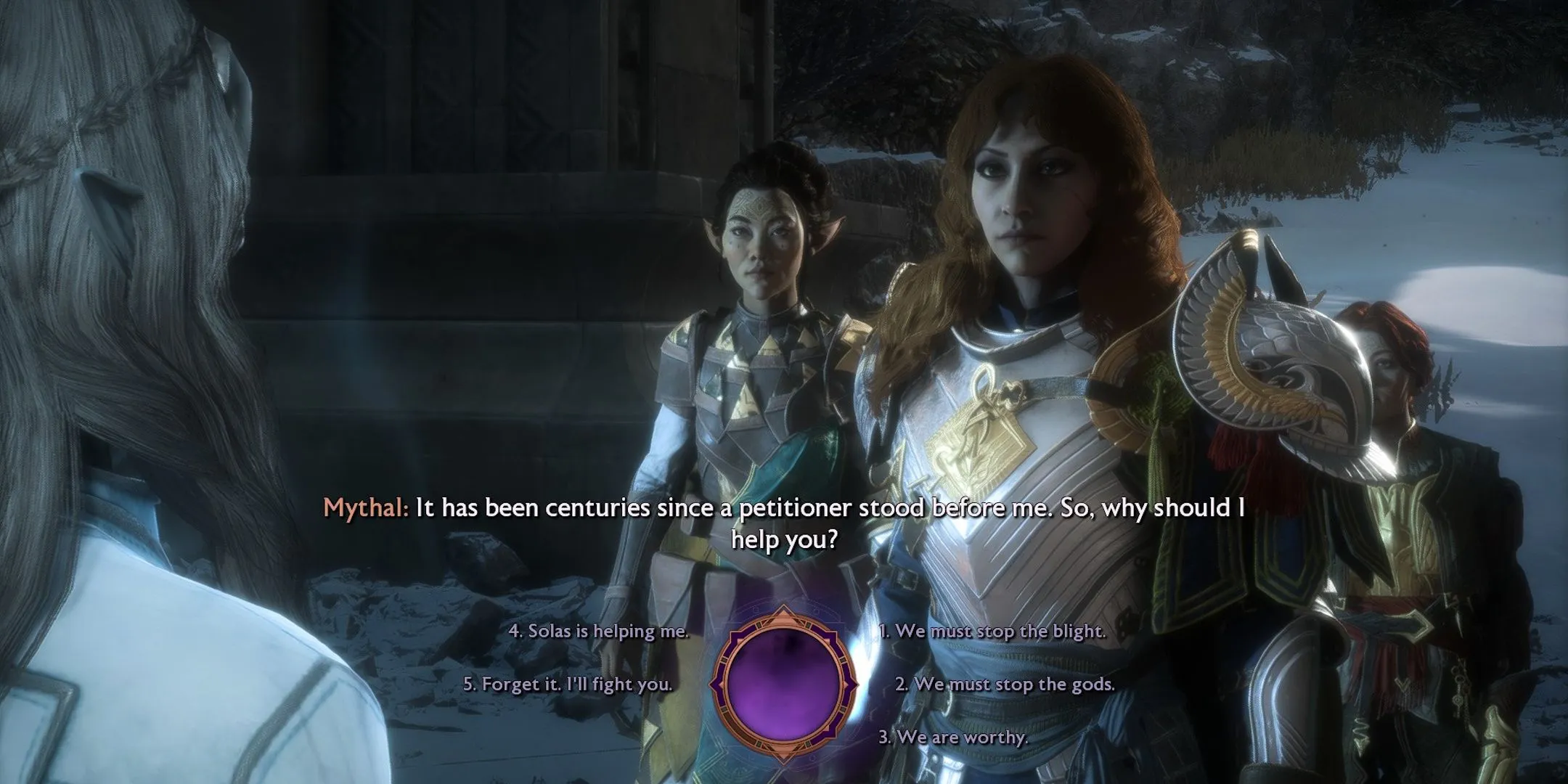

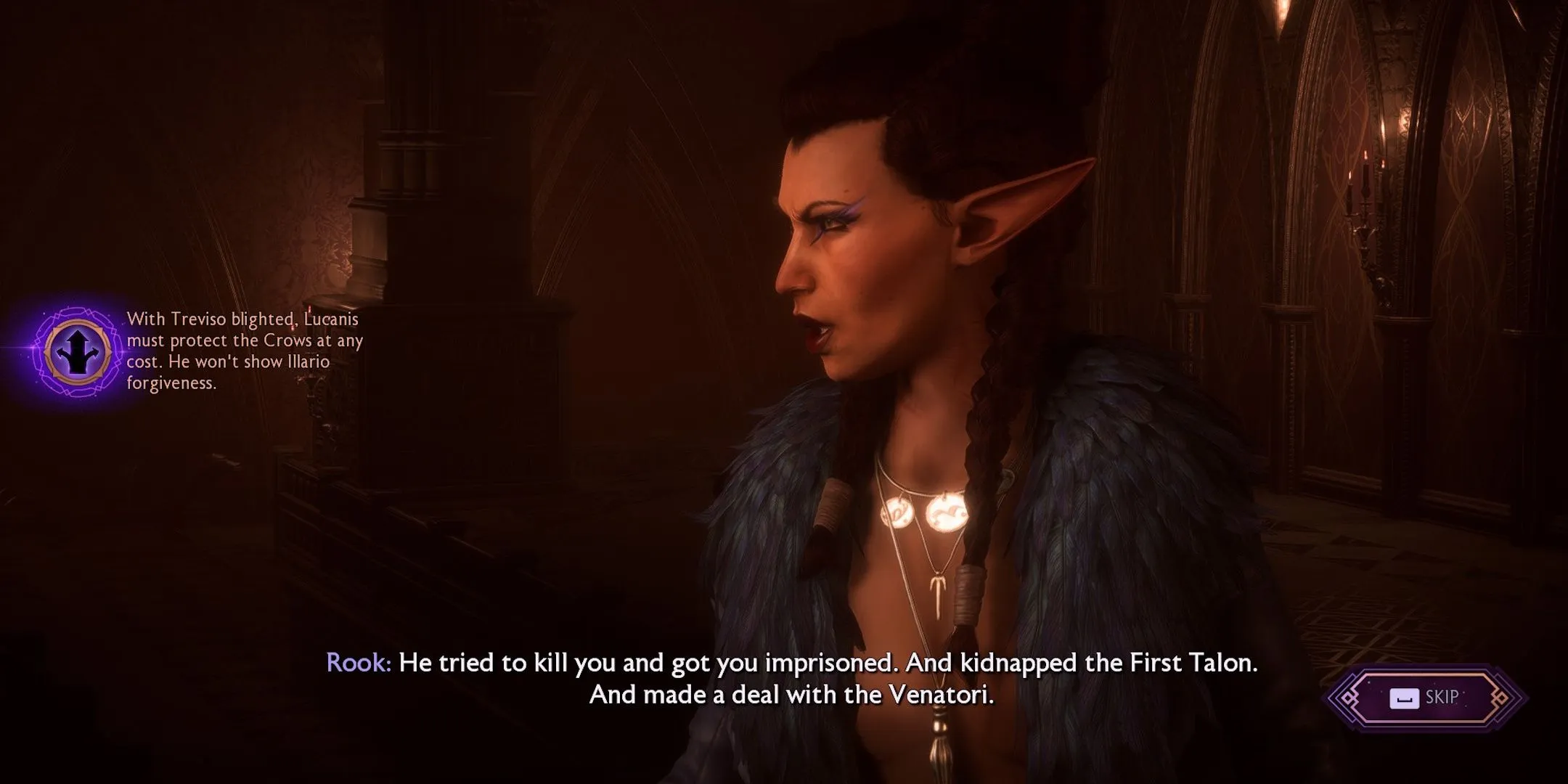
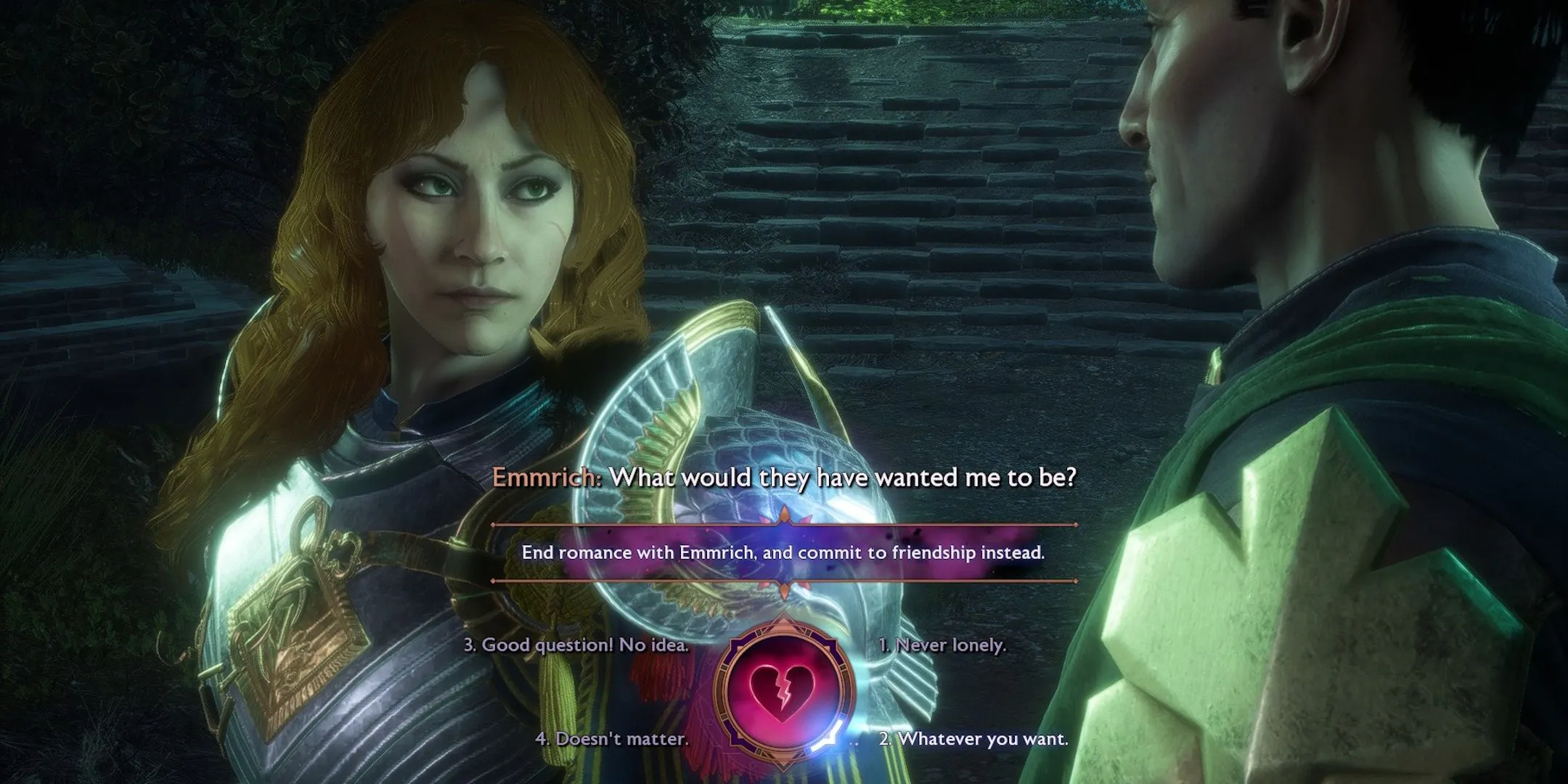
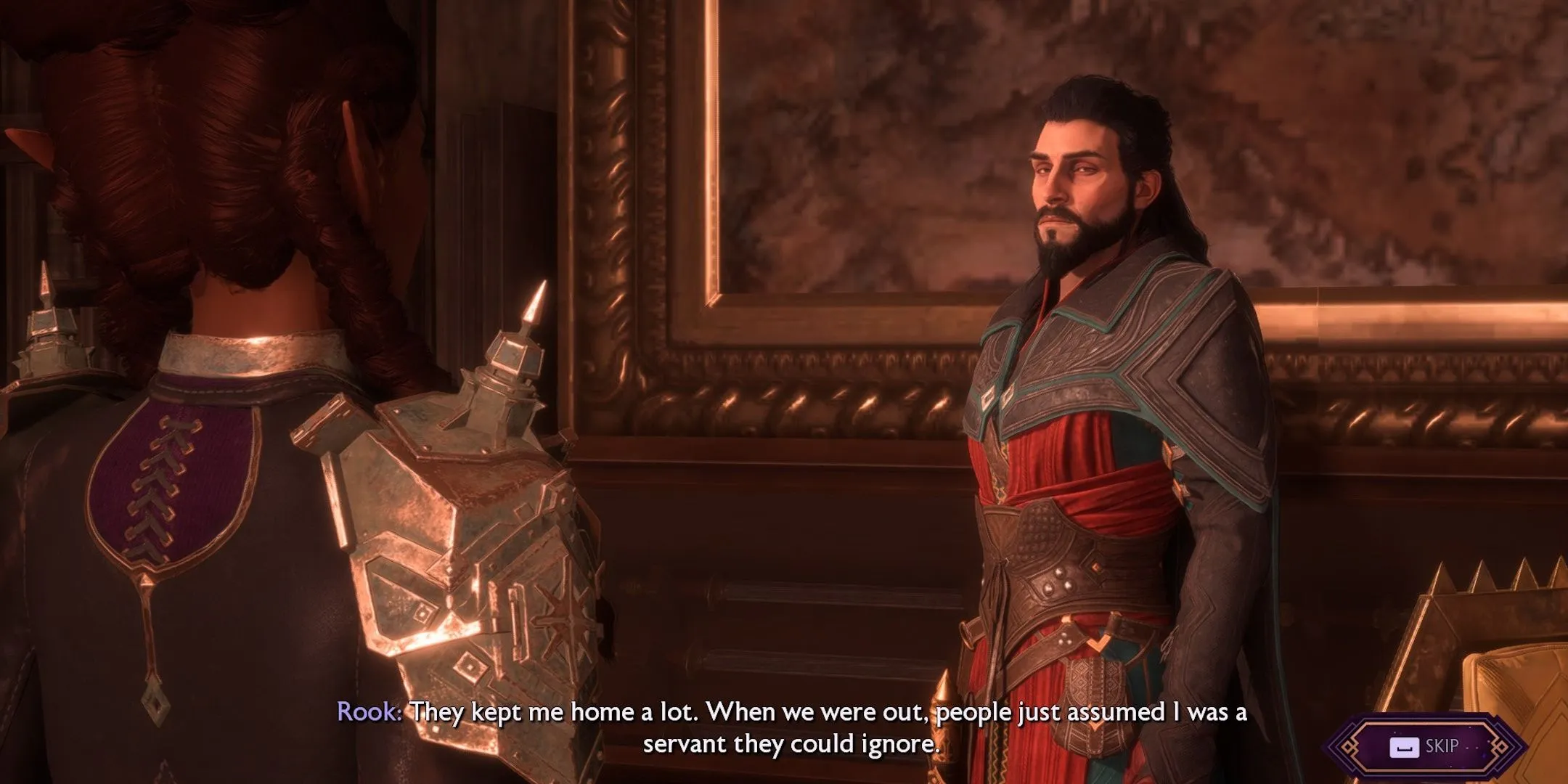
Critics of The Veilguard have noted that Rook is portrayed as a fully realized character, regardless of the chosen background. As players navigate the narrative, it becomes increasingly evident that Rook possesses an established personality, compelling fans to adapt their personal interpretations accordingly. Unlike the Warden of Origins or the Inquisitor, Rook doesn’t embody a completely blank slate, nor are they as malleable as Hawke from Dragon Age 2.
Although Hawke had a defined backstory as a refugee from Lothering, their journey still allowed for substantial roleplaying opportunities. Distinct dialogue choices provided a variety of personalities, with a sarcastic Hawke contrasting sharply with a more rational or aggressive approach. However, Rook’s dialogues can sometimes feel monotonous, merely expressing varying tones rather than presenting significant moral choices, thereby limiting the capacity for ‘evil’ playthroughs. Essentially, Rook remains consistent in nature; only their surname and faction allegiance vary.
Establishing a firm personality for a protagonist can be effective, exemplified by titles such as The Witcher series, where Geralt consistently acts according to his character’s traits. The challenge with Rook is the lack of upfront acknowledgment of their fixed personality, which can mislead players into believing they have ample roleplaying freedom. As the narrative unfolds, further insights into Rook’s character development may overshadow players’ original ideas. Consequently, while roleplaying in Dragon Age: The Veilguard remains feasible, it lacks the fluidity and versatility found in previous installments of the franchise.




Leave a Reply